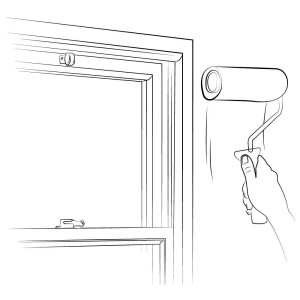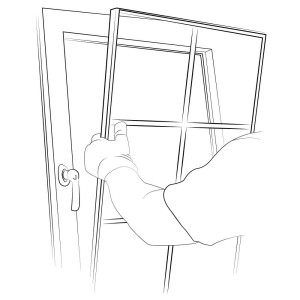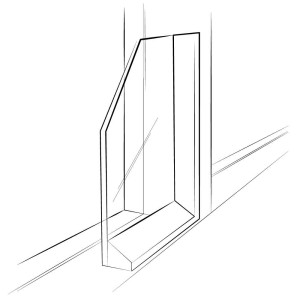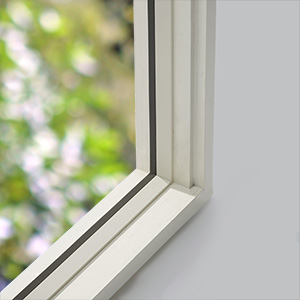Compare Double Glazing Options:
The Inside-Scoop on Double Glazing Alternatives
To get the best results for your home, in summer AND winter, it’s really important to compare double glazing options before you begin knocking out your windows.
One of the most common questions we hear when people are choosing a window solution is: “What should I look out for when I compare double glazing options?”
Whether your home is freezing cold or boiling hot, there are a number of ways to get the benefits of double glazing. Some options are cheap and temporary while others involve a lifetime of renovation and restoration followed by a massive bill.
So you want to get it right, right? So did we.
 |
 |
 |
 |
Maurice Beinat is an expert in energy efficiency and thermal comfort technology with more than a decade of research and development under his belt. He’s personally assessed thousands of homes and has seen the good, the bad and the ugly when it comes to double glazing solutions.
- Heat Shrink Film
- Replacing the Glass Only
- Full Unit Replacement
- Secondary Glazing (Retrofit Double Glazing)
… and learn the real truth about the two most common misunderstandings about double glazing:
- Does glass thickness matter?
- Does double glazing stop direct sun getting in?
Want to install ecoGlaze® Retrofit Double Glazing in your home?
Request a FREE ecoGlaze® estimate here.
Can’t watch the video right now? Here’s the transcript:
 Interview with Maurice Beinat – Compare Double Glazing Options: The Issues and the Alternatives
Interview with Maurice Beinat – Compare Double Glazing Options: The Issues and the Alternatives
“There are a number of ways that you could already treat existing glazing to improve it. One is a heat shrink film that sticks onto the joinery. It’s okay in terms of performance – it can be alright, but it’s very difficult to clean and it’s pretty much a temporary solution. It’s quite good if you’re renting a place, and if you’re going to rent it for a few years, that’s quite a good solution for that. But, for my own home, and for many of our clients, it’s not really how they want to go.
 Another possibility is, in some cases you can take out just the glass and put in a double glazed unit in its place. What happens with that is, invariably, you get a very narrow double glazed unit. And, of course, not all double glazing is born the same, so, the performance of it depends to a large extent on the space between the two surfaces. When you get to a very small space, in order to fit it to the existing frame, really, the performance is a bit limited. Many of the people providing that solution never really state what the performance of their solution is. So that’s often not a very good solution from a performance point of view.
Another possibility is, in some cases you can take out just the glass and put in a double glazed unit in its place. What happens with that is, invariably, you get a very narrow double glazed unit. And, of course, not all double glazing is born the same, so, the performance of it depends to a large extent on the space between the two surfaces. When you get to a very small space, in order to fit it to the existing frame, really, the performance is a bit limited. Many of the people providing that solution never really state what the performance of their solution is. So that’s often not a very good solution from a performance point of view.
 The next thing, of course, is that you can just replace the whole unit, all of your windows and doors with double glazed ones, purpose-made double glazed ones. And from a performance point of view that’s great. But … it’s very expensive; it’s very wasteful of the existing joinery; and also you’ve got the added risk of a builder working in your home, and, is he going to do the right thing? Is he going to seal around the window units before putting the architraves on? Is he going to make-good the walls? You know, then you’ve got decorating to do as well! So, it’s a much bigger process with more risk involved.
The next thing, of course, is that you can just replace the whole unit, all of your windows and doors with double glazed ones, purpose-made double glazed ones. And from a performance point of view that’s great. But … it’s very expensive; it’s very wasteful of the existing joinery; and also you’ve got the added risk of a builder working in your home, and, is he going to do the right thing? Is he going to seal around the window units before putting the architraves on? Is he going to make-good the walls? You know, then you’ve got decorating to do as well! So, it’s a much bigger process with more risk involved.
COMMON MISCONCEPTIONS AROUND DOUBLE GLAZING
People often ask me about the thickness of glass. They say, “well, this glass is very thin so it can’t be very thermally effective”, or, “this glass is thick, it’s laminated, so it’s much more thermally effective”. The truth is that with glass, with single glazing, the only performance you get from that is a little thin layer of air that clings to each surface. So, you can see from that, whether the glass is very thin, or whether it’s thicker, you still just get a little bit of air on each side. So, the thickness of the glass goes towards human impact safety and wind loading, but it does not really go towards thermal performance. So that’s one of the greatest myths that most people have about glazing.
The other one is, with double glazing, is “is it going to be good in the sun?“ … and the answer is – no glass is going to work well in the summertime in the sun. In the wintertime, if you’ve got a heating environment (like most of Victoria does) you want the sun coming through. And the thing about double glazing is, if it’s clear glass that’s perfect, it’s still going to let 95% of the sun straight through, and it’s warmth too. So that’s just brilliant. But, in the summertime, if you’ve got single glazing you’re going to have to shade it, and if you’ve got double glazing you’re going to have to shade it.
 WHAT IS ecoGlaze® SECONDARY GLAZING?
WHAT IS ecoGlaze® SECONDARY GLAZING?
ecoGlaze® is a way of providing all of the benefits of double glazing to existing windows and doors without the need to replace anything. It works by creating a still air space between the existing glazing and the ecoGlaze® panel. We’ve got one system for fixed glazing, that is glazing that doesn’t open. We’ve got another system for most hinged applications like door and awning windows. And we’ve got another system for double hung sash windows and sliding doors. In that way we’ve been able to address all of those issues. We think it looks great, it does perform well, and all of your windows and doors work just as they did before, you don’t need to take things on or off to operate your windows.”
Want to install ecoGlaze® Retrofit Double Glazing in your home?
Request a FREE ecoGlaze® estimate here.
Terms of Use • Privacy Policy • Disclaimer
© ecoMaster, 2016


